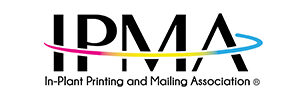A major influencer in the growth and success of digital printing is the workflow infrastructure that surrounds the press. As more commercial printers and in-plants adopt new practices and make investments to improve workflow automation, the benefits of digital printing will continue to expand. Ongoing improvements in end-to-end workflows that improve productivity ─ including a unified workflow, more automation, online job submission, and value-added finishing ─ are enabling print providers to better serve customers, improve profitability, and leverage the benefits of Digital 5.0.
Printing is a manufacturing system that goes beyond the press to encompass all of the stages that result in a finished product. As the manufacturing world has moved into Industry 4.0 and continues to evolve, printing is entering a new phase described as Digital Printing 5.0. In today’s print world, digital presses are meeting more customer requirements, workflows are becoming more collaborative, communication and revisions are happening in real-time, marketing messages are being directed to the individual rather than the group, and tasks are becoming consolidated and automated.
A new research study by NAPCO Research (a unit of NAPCO Media, the parent company of Printing Impressions and In-Plant Impressions), titled Digital Printing 5.0, offers insights on the actions print providers are pursuing to improve their operating infrastructures to maximize the benefits digital printing. The research findings are presented in a series of five white papers. This white paper titled “Digital Printing 5.0, Beyond the Press: Defining the Infrastructure for Operational Success” focuses on print providers ongoing challenge of meeting customer’s budgetary and quality expectations for print work, while still driving profitability. It highlights the importance of understanding the role operational costs and production overhead play in profitability.
One-third of commercial printers participating in NAPCO’s Digital 5.0 survey report competitive pressures to lower pricing have a big impact on profitability. This pressures on profitability is prompting print providers to focus efforts on improving workflow efficiency.
Print provider respondents report that the key operating factors having an impact on profitability are production overhead, running costs, waste, and employee overtime. Each of these profitability influencers can be minimized through more efficient workflows and higher levels of automation. This survey finding points to the importance of making investments in software and hardware that improve automation and productivity. Taking full advantage of digital printing’s benefits requires establishing a workflow to ensure that all stages of the production process are performing at peak efficiency.
Another interesting finding from the survey is that workflow processes are migrating to the cloud. About one-third of commercial printer respondents report portions of their workflow are in the cloud and that they store job files in the cloud. About one-quarter say their operations workflow software resides in the cloud. More than one-third of in-plant respondents report their workflow was cloud-based, while at least one-quarter of respondents report their workflow software and job files are stored in the cloud.
For the complete report, download here.

Robert Barbera
Director, Production Solutions Marketing
Canon USA, Inc.
Robert Barbera is the Director, Production Solutions Marketing for Canon U.S.A. Inc., He is responsible for developing the solutions and services business, managing the outbound marketing initiatives and liaison with industry associations. He has over 25 years of experience in product marketing, business development, workflows solutions, and professional services associated with digital printing.
He was awarded the 2019 Outstanding Vendor Contributor by IPMA and in 2017 he was inducted into the Soderstrom Society, a honors recognition organization for industry professional who have made outstanding contributions to the development and progress of the printing industry. He is a past-board member of PIA/GATF and graduate of Rochester Institute of Technology in Printing Management.
